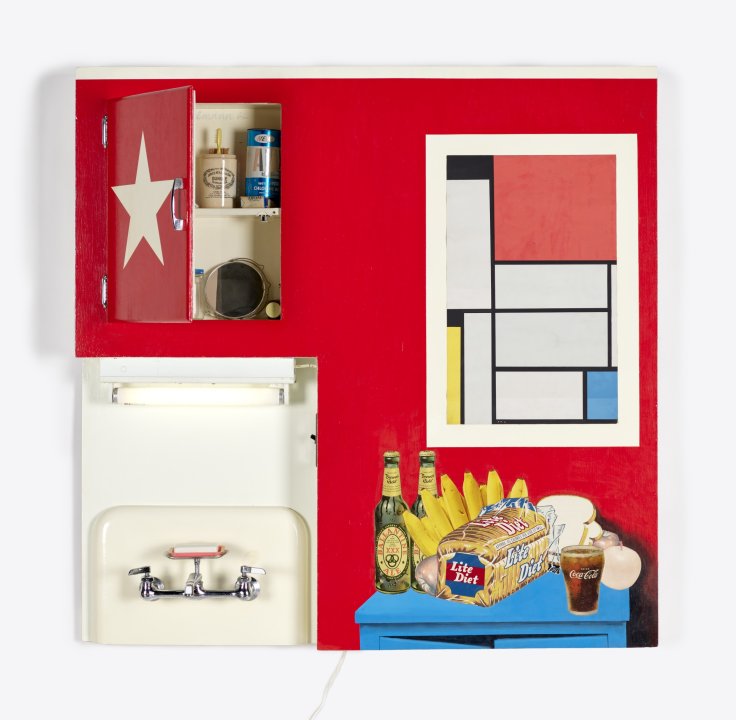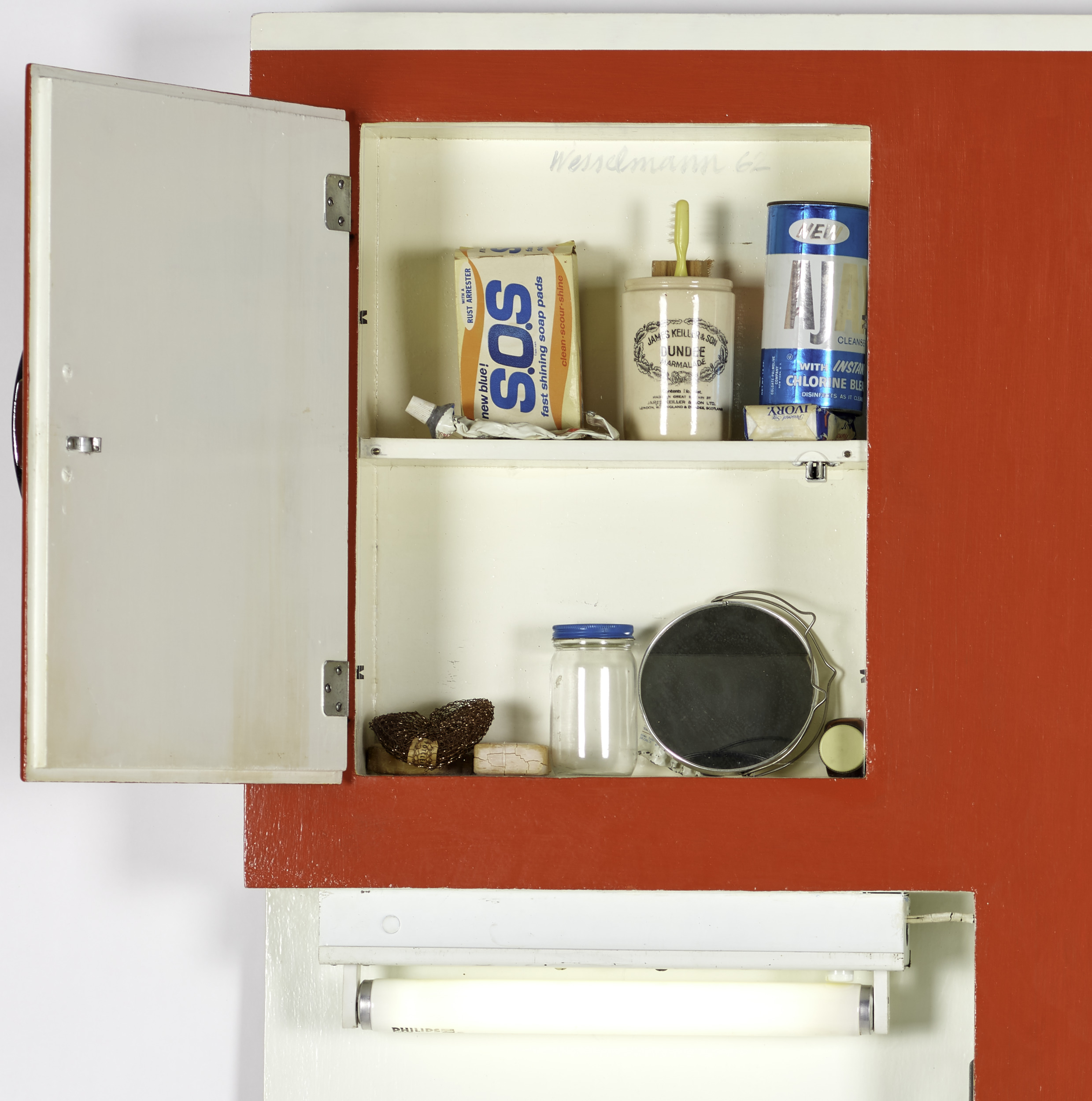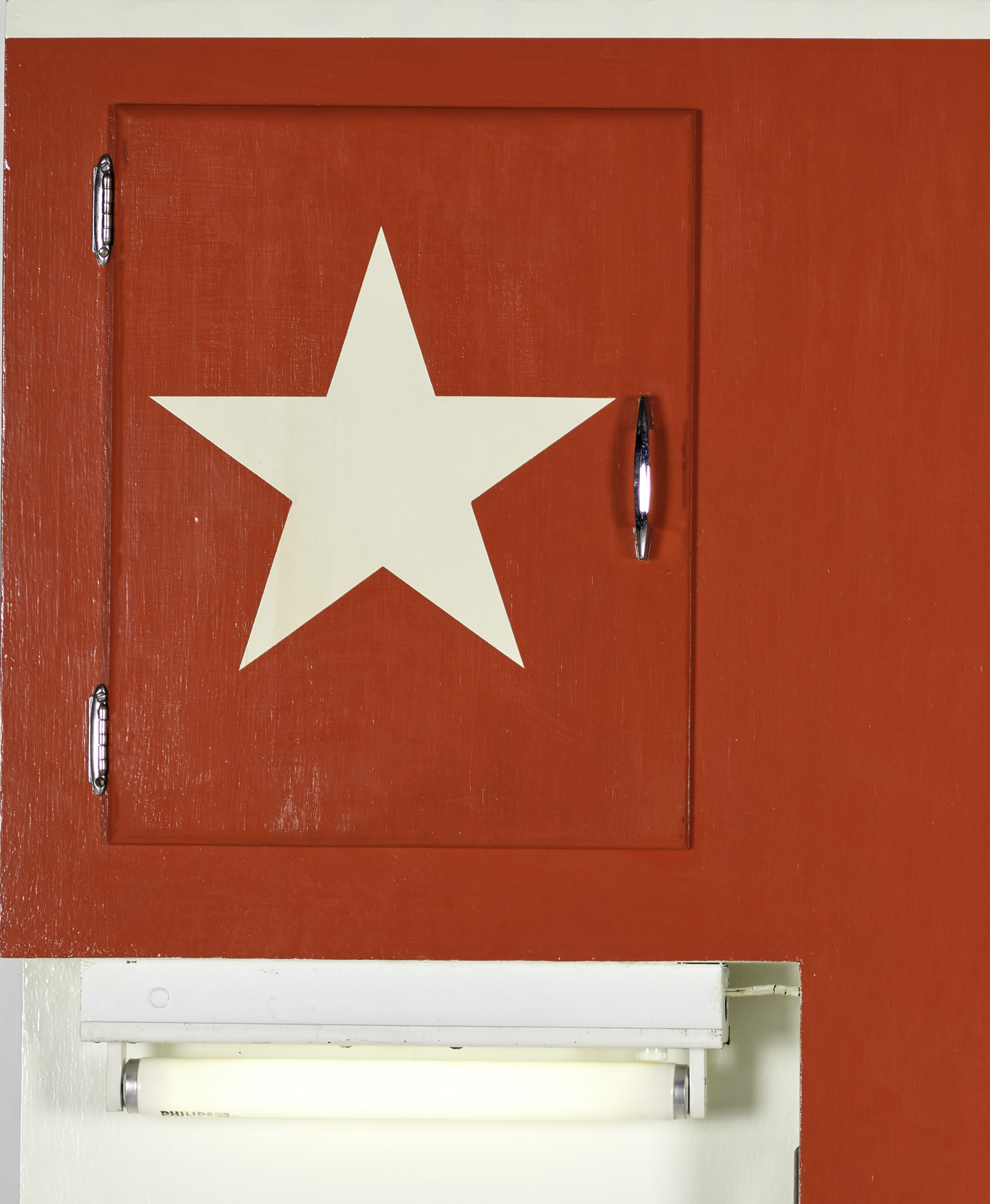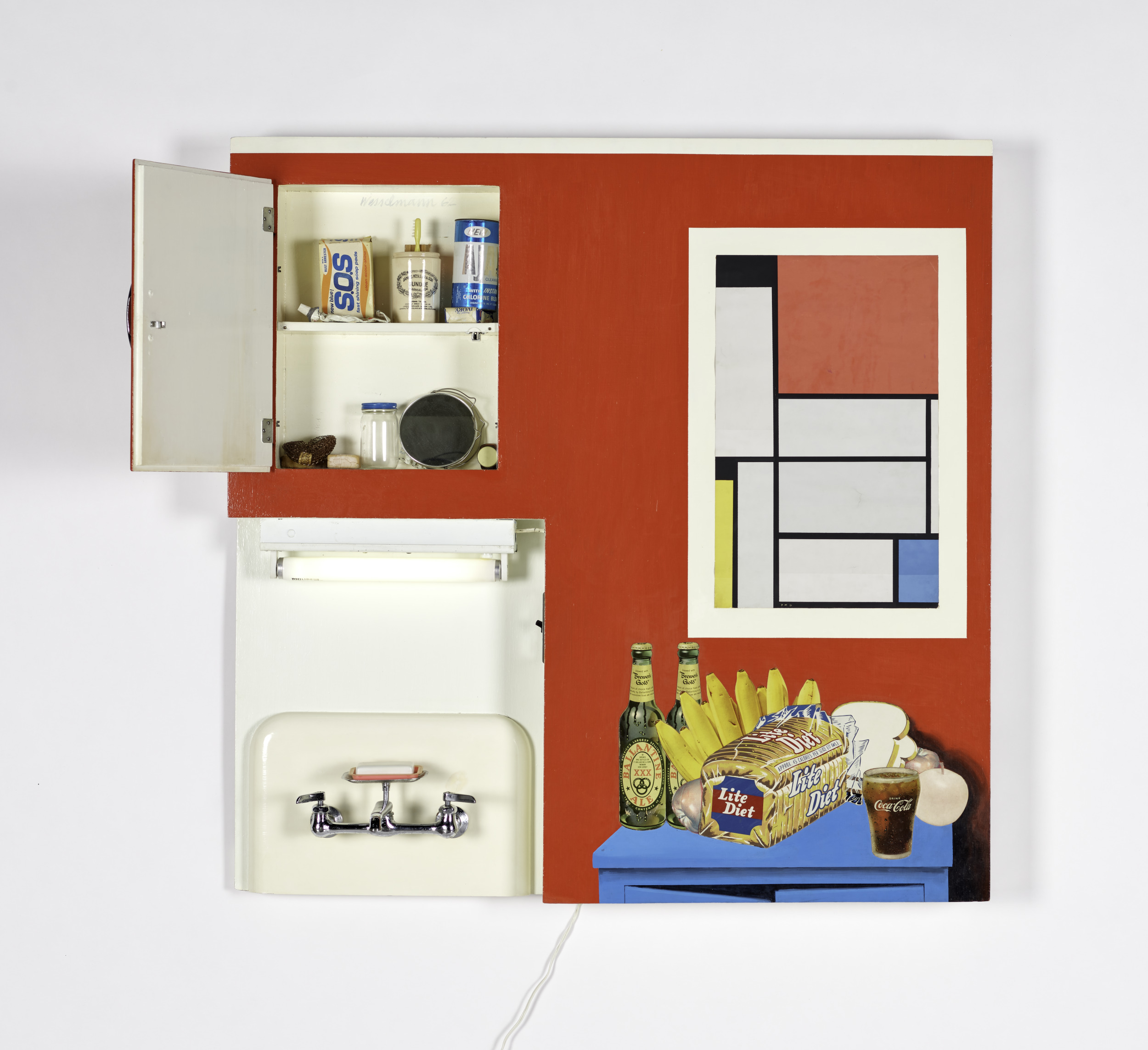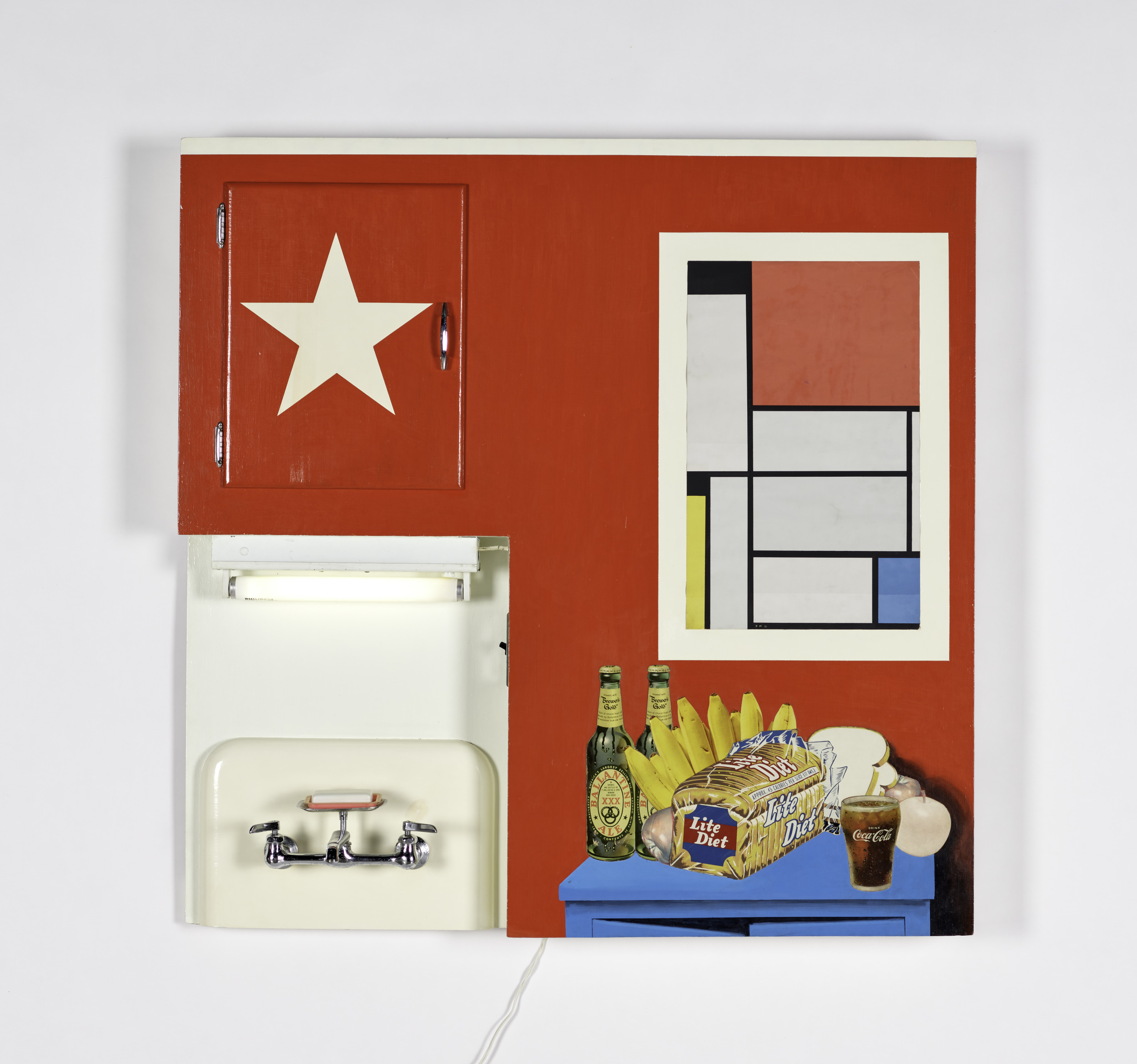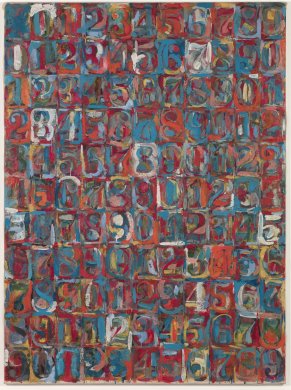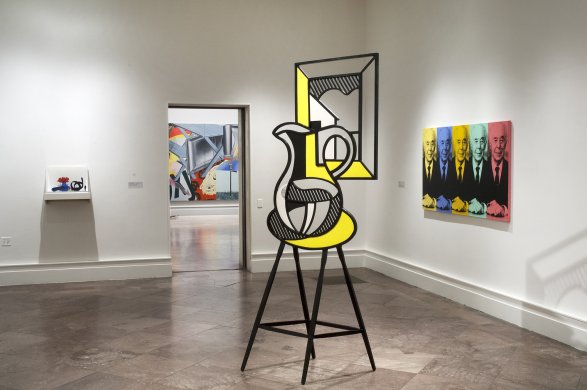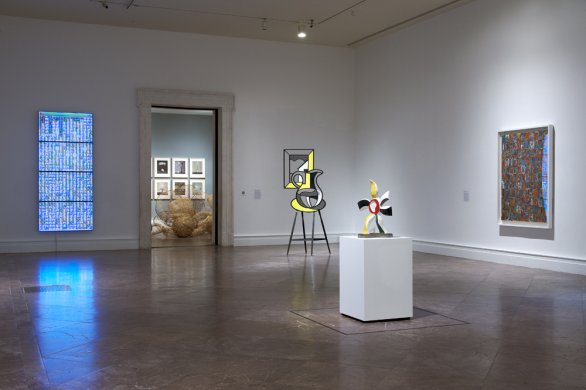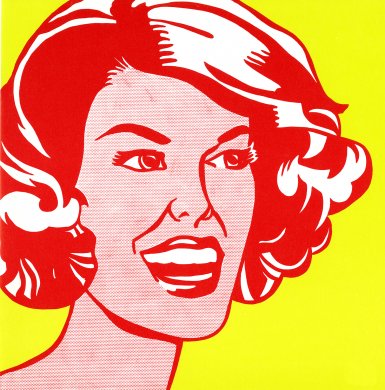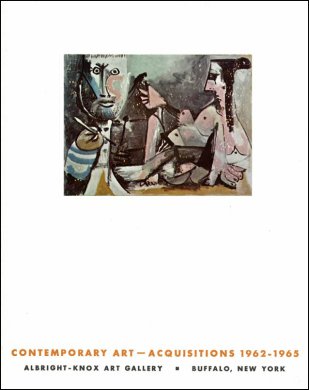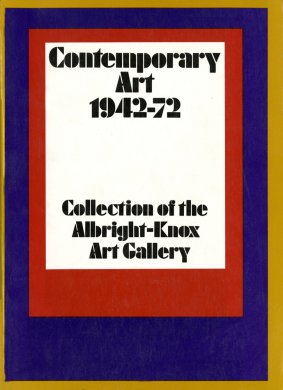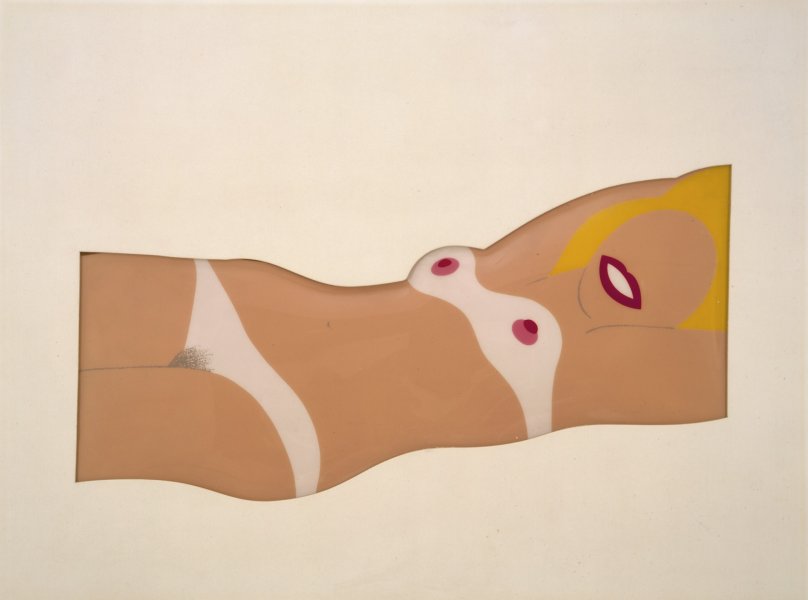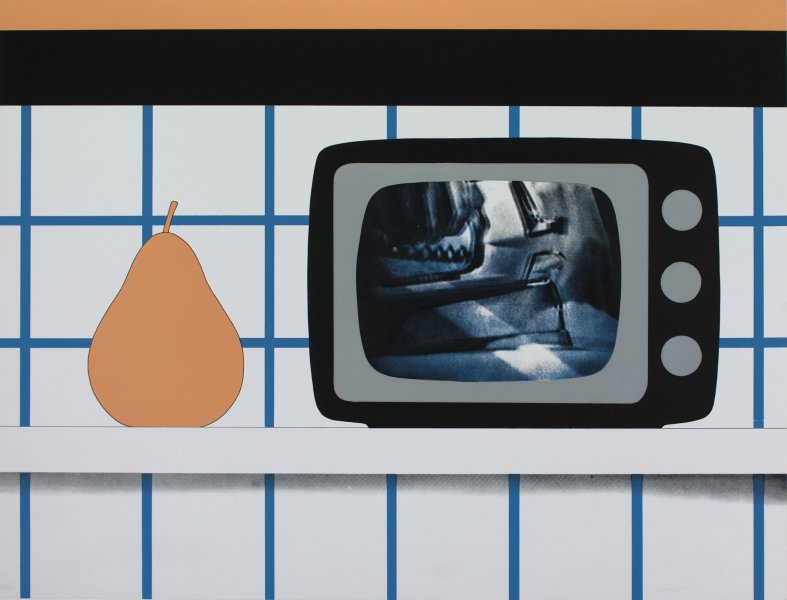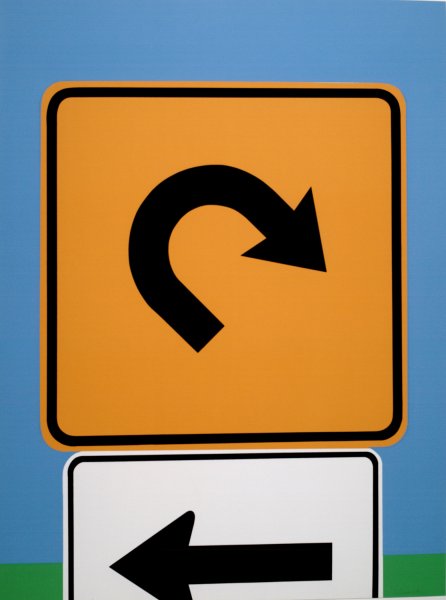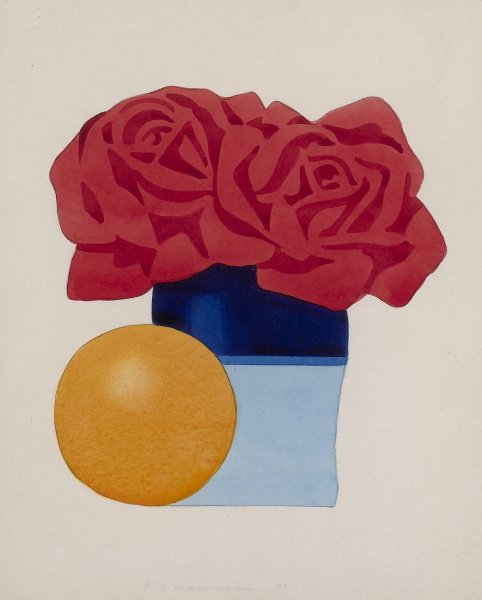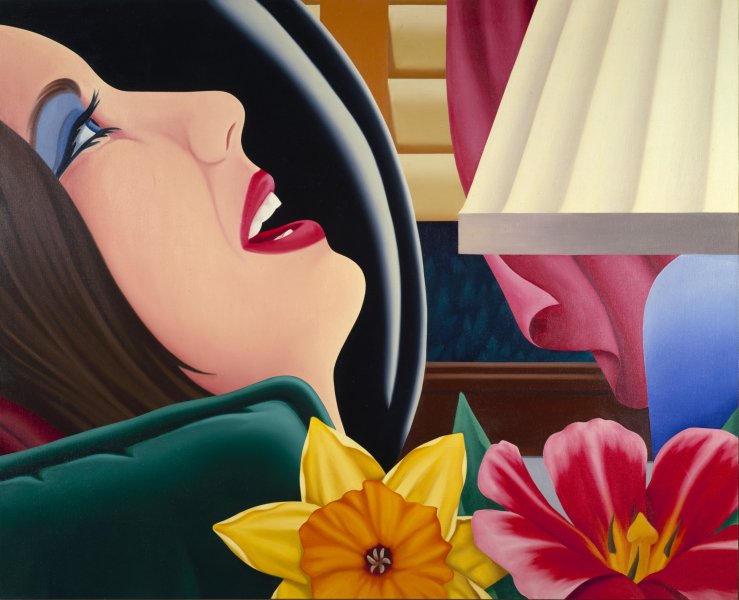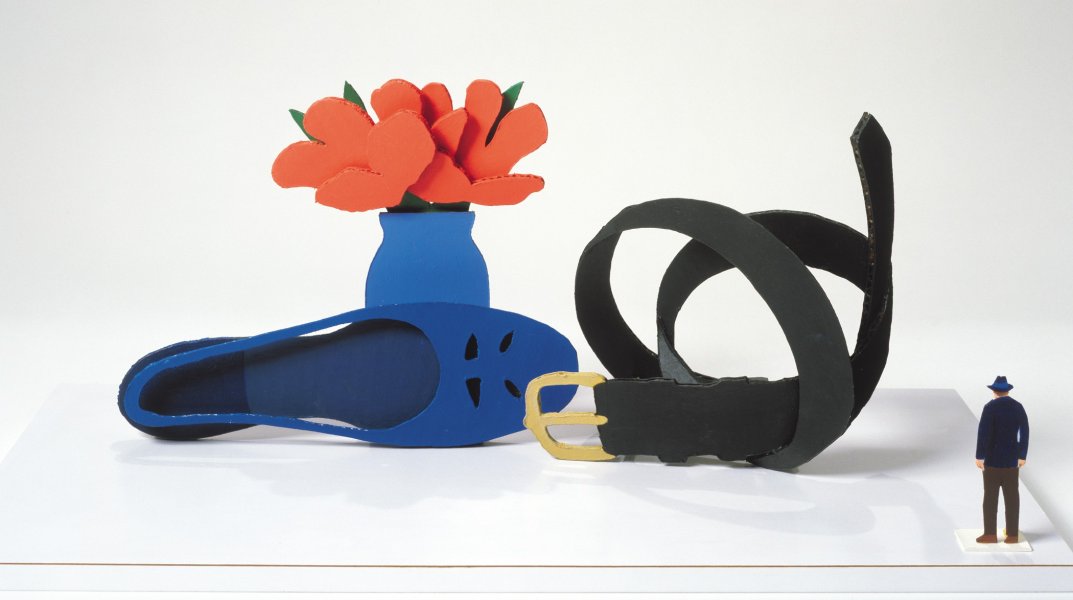Tom Wesselmann
American, 1931-2004
Still Life #20, 1962
Artwork Details
Collection Highlight
Materials
mixed media
Measurements
overall: 47 3/4 x 47 15/16 x 7 inches (121.29 x 121.76 x 17.78 cm)
Collection Buffalo AKG Art Museum
Credit
Gift of Seymour H. Knox, Jr., 1962
Accession ID
K1962:16
Still Life #20 is part of a series of sculptural still lifes that Pop artist Tom Wesselmann began creating during the early 1960s. The left side features once-functional items that he collected and then placed in a real cabinet above part of an actual sink. The light above the faucet can be turned on or off, and the cabinet can be opened or closed. On the right, Wesselmann collaged into the composition two-dimensional representations of various types of food and drink. Above these appears a reproduction of a painting by the artist Piet Mondrian, who utilized the elements of art in their purest forms—straight lines, right angles, and primary colors—in an attempt to represent a future utopian society. Wesselmann often included reproductions of the work of other artists in his constructions to demonstrate the ways in which art was becoming integrated into the fabric of everyday life and had joined the commercial world.
